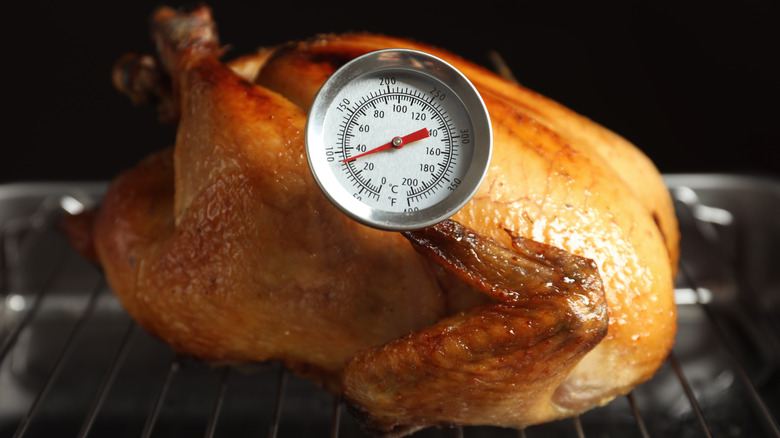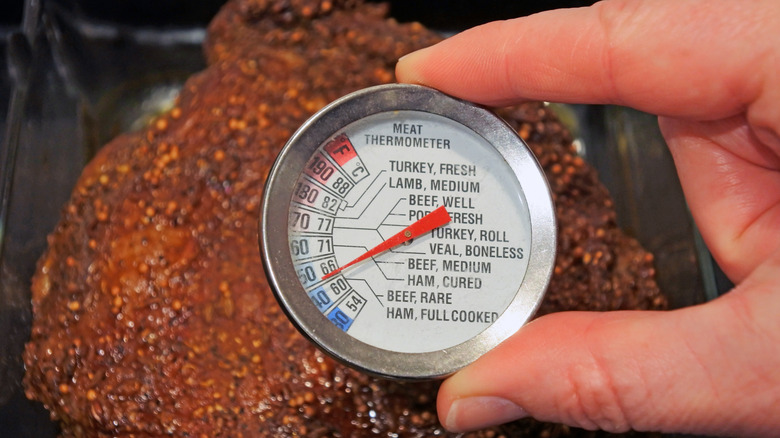Why You Should Always Use A Meat Thermometer, According To The USDA
Most cooks have a food thermometer somewhere in a kitchen drawer that probably isn't opened as much as it should be. But according to Meredith Carothers, a technical information specialist with the USDA's Food Safety and Inspection Service, dusting off that thermometer is as important as ever, especially when it comes to cooking meat correctly.
Whether you're trying to whip up the perfect medium-well steak or roast an entire bird, paying attention to temperature is key. After all, nobody wants food poisoning, which can ruin a perfectly good grill day and even turn into a life-threatening scenario.
Some people swear by the hand method when cooking meats, where certain parts of the human hand are squeezed and their firmness compared against a cut of meat that's sizzling away on a grill or in an oven. Unfortunately, while the hand method may be a convenient way to check meat doneness, it isn't very safe. "Using a food thermometer is the only reliable way to ensure foods have been cooked to their safe minimum internal temperature and are safe to eat," says Carothers.
How to use a meat thermometer the right way
There's a right and wrong way to use a meat thermometer — and if you don't pay attention to what you're doing, it can render the whole process null. Be mindful about which kind of thermometer you're using, as different types of thermometers require piercing depths that are specific to their design. Also, be sure that the thermometer's probe isn't touching any bone or gristle, which can end up giving a skewed reading, notes Cook's Illustrated.
In terms of minimum internal temperatures, USDA technical information specialist Meredith Carothers shares that raw ground red meats, such as ground beef and ground pork, need to be cooked to an internal temperature of 160 F. That's a higher internal temperature than cuts of meat such as beef; pork; veal and lamb steaks; roasts; and chops, which should reach an internal temperature of 145 F with a three-minute rest time. Not cooking any hearty meats like beef, pork, lamb, or veal? Well, poultry requires the highest internal temperature of them all: 165 F.
And if you're a fan of steaks with more than a bit of pink in the center, Carothers has some bad news. "[The] USDA does not recommend eating or tasting raw or undercooked meat. Undercooked meat and poultry may contain harmful bacteria and can cause foodborne illnesses," she says. Cooking meat the safe way may be a little more time-consuming, but it's worth it for your health.

